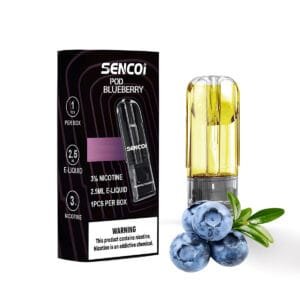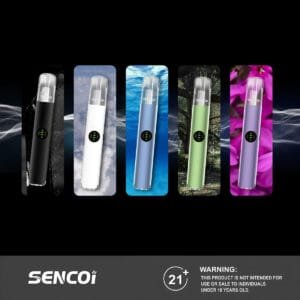The vape industry’s growth has intensified competition. Brands seek better products, tech, and marketing, yet collaboration is key to raising standards and mutual success.
1. Competition Drives Innovation: Dual Forces of Technology and Market
- In the vape market, technology is key to competition. Brands refine e-liquid, improve batteries, and enhance heating to gain market share. Many invest in R&D to offer unique features; for example, SENCOI spends 25% of its revenue on innovation. This benefits both individual brands and the industry as a whole.
- Competition also sparks creativity in branding. Brands use unique designs, personalized options, and limited editions to build loyalty and stand out in a crowded market.
2. Collaborative Success: Supply Chain Synergy and Resource Sharing
- Despite tough competition, vape brands are collaborating more. Stricter regulations and changing market demands drive brands to partner for efficiency and adaptability. OEM and ODM partnerships help reduce costs and expand reach. For example, some brands license designs to grow globally.
- Collaboration also supports joint innovation. Shared patents let brands co-develop technology, cutting R&D costs and accelerating progress across the industry.
3. Cross-Industry Partnerships: Expanding Market Boundaries
- Vape brands are also expanding through cross-industry partnerships. For instance, collaborations with fashion or art brands create trendy, limited-edition products that attract younger consumers and enhance brand appeal.
- Moreover, partnerships with health companies lead to low-nicotine or nicotine-free options, reaching health-conscious users. Together, these efforts help broaden the vape audience.
4. Setting Industry Standards: Addressing Policy and Consumer Needs Together
- Facing stricter regulations, vape brands are establishing industry standards, such as quality control and youth protections, to build credibility and reduce risks.
- Brands also work together on consumer protection, promoting responsible use with clear nicotine labeling and nicotine-free options. This improves public perception and consumer acceptance.
5.From Competitors to Partners: The Future of Collaborative Growth
As the vape market matures, brands are shifting from pure competition to “co-opetition.” Rapid industry changes push brands to move beyond rivalry, embracing diverse collaboration models. Looking ahead, the industry may enter an era of “collaborative innovation,” where brands join forces to expand products and build resilience against risks.
In the vape industry, competition and collaboration drive progress. Innovation helps brands stand out, while teamwork raises standards and expands the market. As the industry and regulations evolve, new growth opportunities will emerge, helping brands succeed.











